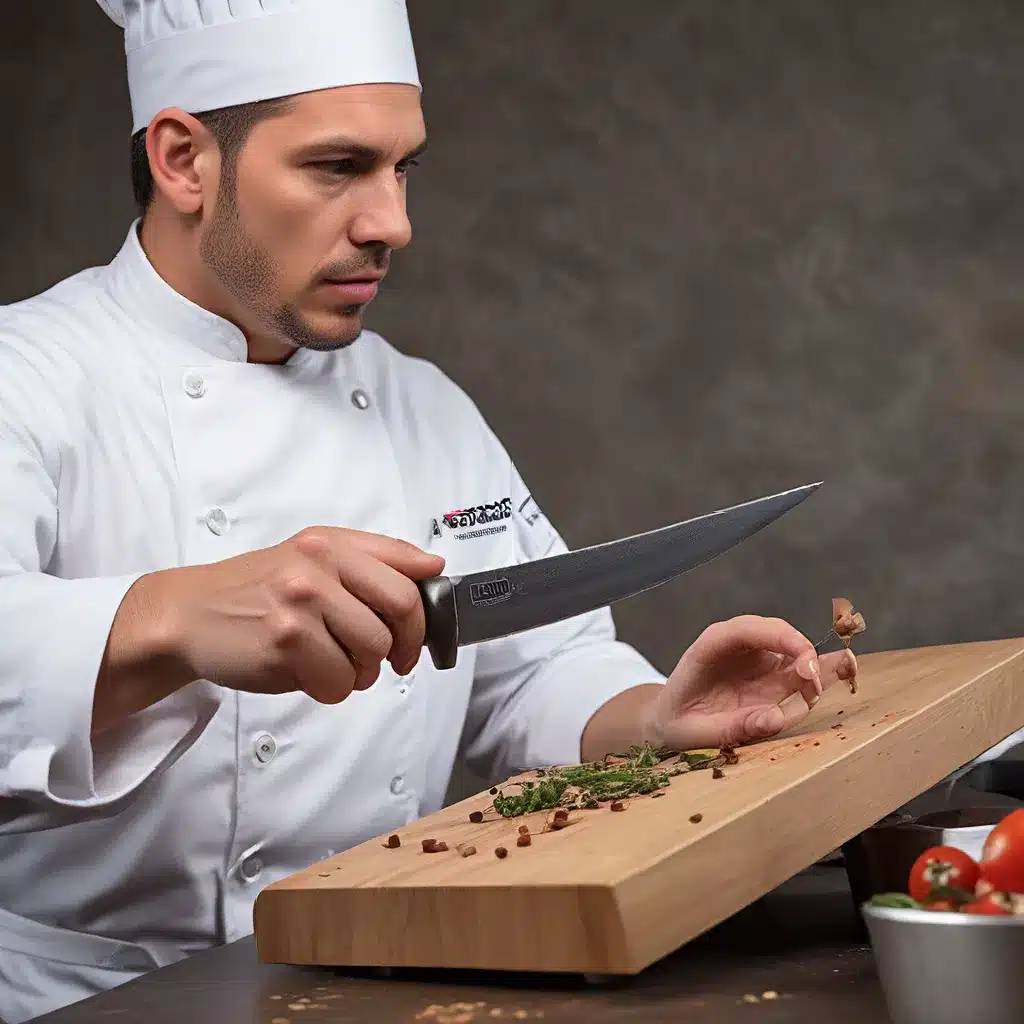
As a proud left-handed chef, I’ve had my fair share of struggles when it comes to navigating the kitchen. While the culinary world may have been designed primarily with right-handed individuals in mind, I’m here to tell you that lefties like myself can absolutely thrive in the kitchen – with the right knowledge and a few strategic adaptations.
Navigating the Unique Challenges of Left-Handed Knife Use
One of the most significant hurdles I’ve faced as a left-handed chef is the design of traditional kitchen knives. As I’ve discovered, most knives are optimized for right-handed users, with the blade angled and sharpened in a way that makes it challenging for southpaws like myself to maneuver effectively.
According to Quora, the primary difference lies in the blade orientation – right-handed knives have the blade angled slightly to the right, making it easier for right-handers to slice and chop. For us lefties, this means we have to compensate by either using our non-dominant hand or contorting our wrist in an unnatural way to get the job done.
But the challenges don’t stop there. The placement of the bolster, the part of the knife where the blade meets the handle, is also a crucial factor. On a standard right-handed knife, the bolster is positioned in a way that makes it comfortable for right-handed users to grip the knife securely. For lefties, this can feel awkward and even lead to discomfort or hand strain over time.
Discovering the Benefits of Left-Handed Knives
Fortunately, the culinary world has recognized the unique needs of left-handed chefs, and there are now a growing number of specialized knives designed with us in mind. As one Redditor noted, these left-handed knives feature a blade that’s angled to the left, allowing for a more natural and comfortable cutting motion.
But the benefits of left-handed knives go beyond just the blade orientation. The bolster on these knives is also positioned to provide a secure and ergonomic grip for left-handed users, reducing the strain and discomfort that can come with prolonged use of a right-handed knife.
The Prevalence of Left-Handed Chefs in Professional Kitchens
Interestingly, research suggests that left-handed individuals make up a significantly higher proportion of professional chefs compared to the general population. While left-handers make up around 10% of the overall population, they seem to be overrepresented in the culinary field.
One possible explanation for this phenomenon is that the fast-paced, high-stress environment of a professional kitchen actually favors the unique skills and adaptability of left-handed individuals. As someone who’s had to navigate the challenges of left-handed knife use, I can attest to the fact that we often develop a heightened spatial awareness and an enhanced ability to think on our feet – qualities that can be invaluable in a busy kitchen.
Adapting and Thriving as a Left-Handed Chef
Of course, even with the availability of left-handed knives, it’s important for lefties like myself to develop a versatile skill set when it comes to knife handling. While I may prefer my left-handed knives for certain tasks, I’ve also learned to efficiently use right-handed knives when the situation calls for it.
One strategy I’ve found particularly helpful is to practice using both hands interchangeably, switching between left and right as needed. This not only helps me maintain dexterity with my non-dominant hand, but it also allows me to adapt to the tools and equipment available in any kitchen I may find myself in.
Additionally, I’ve discovered that incorporating certain ergonomic adjustments – such as adjusting the height of my work surface or using a cutting board that’s positioned slightly to the left – can make a significant difference in my overall comfort and efficiency in the kitchen.
Embracing the Unique Perspective of Left-Handed Chefs
At the end of the day, I’ve come to embrace the unique challenges and perspectives that come with being a left-handed chef. While the culinary world may not have been initially designed with us in mind, I believe that left-handers bring a valuable and innovative approach to the table.
By combining our enhanced spatial awareness, adaptability, and creative problem-solving skills, we can not only navigate the kitchen with confidence but also push the boundaries of culinary innovation. And with the growing availability of left-handed knives and other specialized tools, the future looks brighter than ever for lefties like myself.
So, if you’re a fellow left-handed chef, take heart – you’re in good company, and with a little bit of strategic adaptation, you can thrive in the kitchen just like your right-handed counterparts. And who knows, your unique perspective might just be the key to your next culinary masterpiece.
Now, if you’ll excuse me, I’ve got some left-handed knife skills to practice. Happy cooking, my fellow southpaws!


